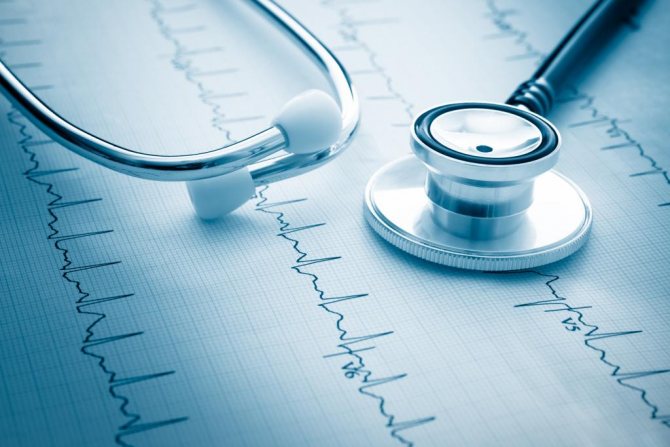Vegetative-vascular dystonia is not a separate pathology, but represents the body’s reaction to existing disturbances in the functioning of certain organs or systems.
Most often, VSD develops against the background of psycho-emotional problems. Common causes of the syndrome are also diseases of the endocrine, cardiovascular and digestive systems, spinal cord and brain injuries, and spinal injuries.
Weakness, fatigue, headache, fainting, surges in blood pressure, apathy, irritability - all this indicates the development of vegetative-vascular dystonia. If measures to treat disorders are not taken in a timely manner, the consequences of VSD can significantly worsen the quality of life of patients. What does the syndrome threaten and what does patient inaction lead to?
Let's start with the fact that VSD indicates malfunctions in the autonomic nervous system, which is responsible for the functions of almost all internal organs. This means that in the absence of effective adequate therapy, the syndrome can provoke quite serious health complications.
Is vegetative-vascular dystonia dangerous?
Are you ready to stop thinking about your problem and finally move on to real actions that will help you get rid of your problems once and for all? Then perhaps you will be interested in this article .
Almost everyone knows the phrase “vegetative-vascular dystonia” or the abbreviation “VSD”, as the name of this disease is sometimes abbreviated. But not everyone is familiar with its causes, symptoms, causes of disruptions in the nervous system (NS), accompanying factors of VSD, methods of its treatment, and whether it is dangerous, whether you can die from it, whether there have already been deaths.
Symptoms of the disease
It can be noted that for some, VSD is associated with constant headaches, nervous disorders (mental disorders), for others it is constant heart problems and fear, for others, vegetative-vascular dystonia is associated with life-threatening problems of the vascular system.
Each of the supporters of the above points of view is right to a certain extent, they can all pass for the truth, but the list of symptoms of this disease is not limited to those presented.
Many doctors do not recognize VSD at all as an independent disease; they consider it only a complex of symptoms.
It can be noted that VSD affects 6 out of 12 systems of the human body:
- There may be cases of excessive chills and sweating, which is caused by temperature changes in the body. Such factors are classified as symptoms of a disease from the thermoregulatory system;
- Possible problems associated with the gastrointestinal system include both nausea and vomiting. There may also be heartburn, excessive belching, and flatulence. Constipation, abdominal pain, diarrhea are also considered signs of a disease such as vegetative-vascular dystonia;
- regarding the vegetative-vascular system, there may be changes in blood pressure, heart rate (usually tachycardia), pain in the chest on the left;
- in the respiratory system, VSD may be indicated by a feeling of lack of oxygen. Also characterized by shortness of breath, rapid breathing, and non-systemic changes;
- unpleasant sensations such as pain and itching in the genital area, frequent trips to the toilet can also pass for symptoms of VSD. Such phenomena refer to symptoms related to the genitourinary system;
- From the vestibular system, symptoms of VSD include cases of chaotic, in terms of degree of constancy, dizziness, being in a state that is close to loss of consciousness. All this can make you go crazy.
Mandatory signs of VSD, in addition to vegetative abnormalities, are also emotional disorders: a state close to panic, fear, constant anxiety.
In a state of stress for a long period of time, a person loses the desire to sleep, gets tired faster, as a result of which his performance decreases, and this does not depend on the level of intelligence (mental development).
The patient tends to be depressed, is in a bad mood, often suffers from phobias, and fear literally takes over him. Of course, there is little good in such a life.
If you have some or even many of the above symptoms, you should not self-diagnose. You need to see a doctor who will prescribe a medical examination. Based on its results, it will be clear whether it is vegetative-vascular dystonia or not.
Causes
According to one definition, vegetative-vascular dystonia is a condition of the human body that is caused by an imbalance in the functioning of the autonomic nervous system (ANS). It is this imbalance that causes all the consequences in the form of disease. The fear caused by dystonia takes its origins from here.
As is known, the human nervous system includes somatic and autonomic.
The first is responsible for the functioning of the human muscles, following the brain signal as to how and in what direction this muscle can be used. These operations are carried out without the knowledge of the human mind.
However, if at least a desire is required for the final jerk at any distance or lifting a barbell, then you don’t have to worry about focusing your vision, inhaling, exhaling, or beating your heart. The ANS, which operates autonomously, is responsible for actions of this kind.
Thanks to it, the constancy of the internal environment of the body is ensured immediately before death. The ANS under standard conditions helps to interact with all 12 systems of the body.
In turn, the environment influences him, and he adapts to the existing circumstances.
In extreme situations, breathing and heart rate increase, blood pressure increases, and there is a fear of bodily harm or even death. This way the body ensures the necessary adaptation to the current conditions and takes the required protective measures. Actually, the systems of the human body are well brought to mind in this, as well as other aspects.
Thus, we can say that the appearance of VSD in the human body, due to its origin in the ANS, is its reaction to certain dangerous circumstances.
Such circumstances can come as a shock and make some people feel stressed and nervous; others may, at their own peril and risk, take the path of smoking or drinking alcohol.
At a certain stage, as a result of a malfunction in the body, VSD may appear, which, of course, will need to be gotten rid of.
Causes of nervous system failures
It can be noted that the main cause of failures in the nervous system, which are often followed by VSD, is a violation of the perception of situations that a person encounters in life.
In other words, events that do not foreshadow troubles and problems are perceived by a person as requiring attention and extraordinary.
This behavior is characteristic of people who are susceptible to various kinds of phobias, panic attacks, and those who feel fear all the time. Usually such fear is far-fetched. In such an environment, you can easily go crazy.
An overly negative interpretation of the situation is often accompanied by signs of vegetative-vascular imbalance, the cause of which is dystonia.
Another significant factor is that the patient in the current situation cannot splash out his adrenaline. This energy is dangerous to a certain extent and needs to come down.
But unlike animals, which can transfer all their negativity to the enemy or flee, this is in most cases unacceptable for humans.
If you still lose your temper, then the person may hear remarks addressed to him that he has gone crazy, his nerves need to be treated, he is going too far, etc.
More than 9,000 people have gotten rid of their psychological problems using this technique.
A fairly common situation in life is when a boss expresses his dissatisfaction to a subordinate in a rude and harsh form. The natural reaction of a subordinate is a state of nervousness, stress, and a surge of adrenaline. The heart rate and breathing rate increase, and fear arises, in this case for one’s reputation.
Muscle tension and increased blood pressure indicate that a person is ready to perform some physical action.
But under standard conditions, he cannot attack his boss or, out of fear, run away, since in human society such a pattern of behavior is essentially unacceptable.
Accordingly, the subordinate turns all the existing negativity onto himself, rather than splashing it out into the environment.
It is worth noting that some people have a normal attitude towards outright rudeness and rudeness (“none of your business”, “brainless chamber”, “so big, but no brain”, etc.), even wishing for death, but others gets nervous from ordinary, completely harmless phrases.
If such cases are repeated frequently, the patient does not develop immunity and only gets worse. Vegetative-vascular dystonia in such cases significantly complicates the patient’s life.
Factors that contribute to the occurrence of the disease
Vegetative-vascular dystonia, in addition to natural causes, can occur due to the body’s predisposition to such diseases.
It can be noted that quite often this manifests itself in those who:
- has a family member who suffered from VSD. NS diseases, unfortunately, can often be inherited. If the child’s parents (or one of them) were too susceptible to various irritants in their youth, prone to phobias, or experienced constant fear, the child may also have similar symptoms;
- has diseases of the endocrine glands. People with diseases of the gonads, thyroid gland, and adrenal glands have a high risk of contracting the disease in question;
- has org. brain damage. Patients who previously had tumors and brain injuries, strokes close to death, are quite vulnerable to vegetative-vascular dystonia;
- undergoes a stage of endocrine restructuring of the body. Vegetative-vascular dystonia quite often occurs in a person during that period of life when not only the restructuring of the nervous system occurs, but also hormonal changes occur.
Getting rid of illness
During the treatment of such an ailment as vegetative-vascular dystonia, one should strictly adhere to all the recommendations of the attending physician with the necessary qualifications and training.
If your emotional state often begins to get out of control, you can consult a psychiatrist. At the same time, one must overcome the fear and prejudice that the help of such a specialist is needed only when a person is mentally ill or close to going crazy.
You should pay attention to your lifestyle. It is important to create the right diet, increase sleep duration to 8-9 hours a day, and walk 2-3 hours a day. You can diversify your life by visiting the gym and active sports. You should remember the positive moments in life when you were delighted, crazy about it, and think about what is missing at the moment.
You should learn to think positively and get out of the rut of negative thinking. As you know, there are both good and negative moments in life. However, when you learn about the disease, you should never despair. It is important to receive and give positive things, to try to live a full life.
Risk of death
Many patients who have vegetative-vascular dystonia wonder: is it possible to die from this disease, how dangerous is it, what is the risk of death?
It is worth noting that vegetative-vascular dystonia, in fact, to a certain extent exists only in the patient’s head and does not pose any threat to life, it is not fatal, you cannot die from it, except, figuratively speaking, to die morally. And it’s quite easy, at least in a mild form, to go crazy. There is no physical risk of death.
In no case should you think about death, because in this case there is really no risk of death.
It should be borne in mind that many patients are easily suggestible and become enemies to themselves, having come to terms with the diagnosis. If you do nothing, you are unlikely to recover. However, by deciding to live without restrictions, fill your life with positivity and leave fear behind, you can overcome the disease.
If you don’t want to give up and are ready to really, and not in words, fight for your full and happy life, you may be interested in this article .
Source: https://turbo-suslik.org/vsd/
What are crises?
Autonomic crises are a fairly common consequence of vegetative-vascular dystonia. As a rule, they are extremely difficult for people to perceive. The patient himself and his relatives may consider an attack of VSD to be an extremely severe and life-threatening condition. Actually this is not true. Only the first attacks are difficult to perceive, but with their frequent repetition the patient adapts to them. But it is often impossible to completely get rid of the feeling of fear.
Panic attacks with vegetative-vascular dystonia come in three degrees of severity:
- Mild degree. With this type of attack, few symptoms of VSD appear, the duration of the crisis is about 15 minutes,
- Average. Several symptoms of VSD occur, dysfunction of the autonomic system is pronounced. Duration from half an hour to an hour. Weakness after an attack lasts about a day,
- A severe attack of vegetative-vascular dystonia is characterized by the appearance of many attacks, autonomic disorders are very pronounced. Convulsions and twitching of the limbs occur. Over the next few days, the person feels very weak, which makes it difficult to lead a normal lifestyle.
How dangerous is vegetative-vascular dystonia?
The symptoms of a sudden attack of VSD can be so pronounced that the patient develops a fear of death, which is sometimes difficult to overcome. Let’s figure out why vegetative-vascular dystonia is actually dangerous.
- Danger of VSD
- Important Features
- Is it possible to die from VSD?
- Reviews
Vegetovascular dystonia is a functional disease that occurs due to an imbalance between the two branches of the autonomic nervous system. It manifests itself as a whole complex of symptoms that make you feel worse. The severity of the clinical picture is sometimes serious. People panic because:
- increased heart rate;
- blood pressure surges;
- severe headache;
- numbness of the limbs, lips, tongue;
- interruptions in heart function.
Anxiety progresses. A panic attack occurs.
Dysfunction of the autonomic nervous system is not life-threatening. However, the consequences of VSD cause many problems.
Symptoms of VSD do not lead to disturbances in the functioning of organs, but to anxious thoughts and anticipation of an attack. They cause the patient's condition to worsen. Such people should not occupy positions that require heavy physical or mental stress. Manifestations of VSD can occur suddenly and cause an accident.
Important Features
It is possible to live with vegetative-vascular dystonia. People suffer from dysfunction of the autonomic nervous system for years, decades without concomitant diseases. Adequate therapy greatly improves the well-being of patients. If you maintain your health and prevent complications in a timely manner, then you don’t need to be afraid of VSD.
To reduce the risk, VSD should be differentiated from the following diseases and conditions:
- Coronary heart disease (CHD). danger – myocardial infarction.
- Hypertonic disease. Hypertensive crises closely resemble classic panic attacks.
- Pathology of the respiratory system. Frequent shortness of breath and a feeling of lack of air force doctors to look for organic pathology.
- Epileptic seizures. Paroxysm of nocturnal dystonia is sometimes accompanied by convulsions.
Those suffering from panic attacks are prone to neuroses. As the next crisis develops, they worry even more, and this forms a vicious circle. The functioning of the ANS occurs and the condition worsens. To normalize well-being, sometimes a person just needs to calm down. In other situations, it is impossible to do without specialized medications.
Vegetative-vascular dystonia in itself is not dangerous, since it is one of the secondary functional disorders. It is enough to eliminate the root cause to eliminate the disease.
Is it possible to die from VSD?
With VSD&, a sympathoadrenal crisis often occurs. It is accompanied by pronounced fear for one's own life. Due to discomfort in the heart, a feeling of lack of air, and loss of consciousness, the patient thinks that he will not survive.
Death does not occur due to autonomic dysfunction. The manifestations of this disease have not yet led to the death of anyone. The life-threatening consequences of attacks of dystonia:
- Car crashes. When a dystonic person is driving and has a sudden headache and loses consciousness, there is a risk of disaster.
- Progression of the underlying pathology - if it is not treated, then death occurs because of it, and not because of VSD. For example, dystonia, which develops against the background of coronary artery disease, aggravates the condition of coronary blood flow, and myocardial infarction develops. The cause of death in this case is the development of cardiogenic shock, ventricular fibrillation and flutter, asystole, and cardiac rupture. None of these dangerous and fatal complications develop with “pure” dystonia.
- Injuries. Vagoinsular crisis often accompanies VSD. It is characterized by possible fainting and loss of consciousness. No one is immune from falling with a head injury, brain hemorrhage, or other serious injury resulting in death. But even a completely healthy person can fall to his death.
People die not from dystonia, but from complications of concomitant diseases or their consequences. The life expectancy of a person diagnosed with VSD is the same as that of healthy people. The main thing is to monitor your health and consult a doctor in a timely manner.
Vegetative-vascular dystonia is not fatal. Adequate control over the nervous system and comprehensive treatment of the underlying disease allows you to forget about the problem forever.
Source: https://distonija.ru/prichiny/chem-opasna-vegeto-sosudistaya-distoniya
What is VSD: symptoms and treatment
The consequences of this disease can be so serious that they make the patient’s life a living hell. The term “dystonia” refers to a disorder in the interaction between the sympathetic and parasympathetic parts of the nervous system. Manifestations of the disease are very diverse. The symptoms and consequences of VSD are interrelated. An experienced neurologist will easily suggest possible consequences based on the complaints and clinical picture of the patient’s condition when seeking help.
The most common symptoms of VSD:
- Cardiac dysfunction syndrome. It manifests itself individually - from mild arrhythmia to pain simulating a heart attack. The consequences of VSD with this symptom are lack of air, pressure surges, which can result in a vegetative crisis. Treatment should be selected in conjunction with a cardiologist.
- Asthenic syndrome - impotence, anhedonia, weakness, lack of vitality. The consequences of VSD with this symptom are depressive, anxiety disorders and other psychiatric diseases. Treatment is carried out jointly with a psychiatrist.
- Thermal regulation disorders - hot flashes, sweating, freezing, cold extremities. The consequences of VSD with this symptom are constant low-grade fever. Also, the temperature can rise during periods of severe stress. Some patients, on the contrary, are prone to a decrease in temperature.
- Fainting, dizziness. The consequences of VSD, if the disease is not treated, are very dangerous: a person can suddenly lose consciousness. As a result, fatal accidents occur. the patient may fall at home or on the street, injure his head, or receive fractures of greater or lesser severity.
Consequences of VSD: how dangerous is vegetative vascular dystonia for life if left untreated?
Is it possible to die from VSD? This question has probably worried everyone who has encountered at least several symptoms of vegetative-vascular dystonia throughout their life. On the one hand, this diagnosis is made almost more often than all other somatic and mental disorders, on the other hand, many experts do not consider VSD to be an independent disease, but rather a complex of symptoms and conditions.
Why does VSD occur?
VSD is a congenital genetic disease that most often begins to develop in a child while still in the womb. Such children are born with an unstable psyche and low weight due to oxygen starvation. During pregnancy, the development of dystonia in a baby can be provoked by:
- neuroses, breakdowns;
- stress;
- prolonged depression;
- bad habits (smoking, alcohol);
- excessive emotionality;
- overwork.
Scientists have proven that most often people with VSD are workaholics who are not used to sitting idle.
Symptoms of VSD in childhood and adolescence, when the nervous system begins to respond inadequately to stimuli, may appear against the background of:
- sedentary lifestyle;
- hormonal imbalance;
- ARVI, influenza;
- unbalanced, poor nutrition;
- lack of vitamins and microelements in the body;
- poisoning, intoxication;
- psychological problems: lack of willpower, inability to control one’s desires.
Causes
Very often, VSD begins in early childhood. Well, the second option is in the prenatal period. The cause of the disease usually lies in genetics, oxygen starvation in the prenatal period, or trauma during childbirth.
An important factor in the development of the disease is maternal smoking and alcohol consumption during pregnancy. But in infants and young children there are no particular disturbances.
Except that newborns have less weight and are mentally unstable.
As for adults, VSD manifests itself for various reasons:
- Prolonged stress that ends in a nervous breakdown.
- Sharp intensity of emotions. This can happen when something very unexpected happens. It makes no difference whether the emotion has a positive or negative sign. Any excessively strong feelings are harmful.
- Overwork. Therefore, VSD is often called the disease of workaholics. Especially considering that office workers move very little. The same goes for money-hungry freelancers. Everything is good, but in moderation.
- Allergy. The manifestation of an inadequate response of the immune system can affect any organ. If the nervous system is affected, one of the consequences is VSD.
- Harmful climate or ecology.
- Sedentary lifestyle. Or, on the contrary, hyperactive. VSD is a disease of immoderate people. Excessive in work, immoderate in physical activity or rest, immoderate in emotions, and so on.
- Changes in hormonal levels. Therefore, very often VSD is first diagnosed in adolescents.
- Poor nutrition. A deficiency or excess of certain microelements can trigger the first attack.
- Infectious diseases. And most often these are viral diseases. If your child often suffers from ARVI, his risk of developing VSD is much higher.
- Intoxication of any kind. Yes, after immoderate celebration at the New Year's table, you can also earn VSD.
- Lack of willpower. Moreover, its manifestations can be correct and incorrect. The correct use of volitional energy is to control your own thoughts, to think in the way you need. It's not easy, but it's harmless. But if a person does not want to do something, but does it, then this creates stress. This display of willpower can only make the symptoms worse. Willpower is the control of desires, not actions.
Long-term depression may be the cause of VSD
Causes and mechanism of development of VSD
Diagnostic studies indicate that this set of symptoms is a consequence of an imbalance in the functioning of the autonomic nervous system. Unlike the somatic nervous system, which is controlled by consciousness and reason, the autonomic nervous system works without our participation.
This is the regulation of breathing, heart contractions, focusing of vision and other basic functions of the body depending on environmental conditions: for example, accelerating the reaction and increasing the heart rate in extreme conditions or slowing down breathing and relaxing muscles during sleep.
This part of the nervous system always works: from the moment a person is born and literally until death.
Mechanism and causes of vegetative-vascular dystonia
The vegetative-vascular system works in the body from the first day of life until the last breath. Its normal performance is extremely necessary for a person. It is responsible for all reactions that occur in the internal organs. It performs its functions without the participation of the mind and consciousness. The factors that provoked VSD disorders may have completely different origins.
Main causes of the disease:
- diseases of the endocrine system – hormonal imbalance occurs in the internal organs. Problems arise with the gonads, thyroid gland, adrenal glands;
- organic brain damage. The risk group includes patients who have suffered a stroke, have tumors in the brain, or a history of TBI. In such people, VSD syndrome may recur. At the same time, their symptoms are very pronounced - headaches, dizziness, rapid heartbeat. There is also an emotional deviation - panic attacks, anxiety, fear of suddenly dying;
- during hormonal changes in the body. Adolescence, labor, pregnancy, constant stressful situations - all this affects the structure of the endocrine organs. That is, the system adapts to new circumstances and changes, and at this moment the VSD syndrome occurs. During this period of time, an active surge of secretion occurs in the body, resulting in a hormonal imbalance;
- genetic predisposition. Scientists have established the fact that mental disorders are transmitted through genetics. The same can be said about VSD. When one of the family members has an emotional disorder, for example, anxiety, fear, depression, fear of suddenly dying. Then the next generation is at risk, and in most cases will have VSD disease.
Forms and methods of classification of VSD
The earliest and most established is the division of vegetative-vascular dystonia into two types of course - sympathotonic, vagotonic. These two conditions are radically different from each other in clinical course.
With sympathotonic dystonia, the patient is overly active, proactive, and efficient. However, this seemingly good condition has a negative side - sleep disturbances, a constant feeling of anxiety. The patient's appearance is similar to that of hyperthyroidism:
- shiny eyes, slightly bulging;
- dry skin;
- rapid heartbeat, breathing.
The vagotonic type of vegetative-vascular dystonia is characterized by excessive slowness and drowsiness. It is difficult for the patient to make choices and important decisions. Externally, moist skin, increased sweating, and salivation will be observed. There is a decrease in heart rate and breathing.
With this pathology, no morphological changes are detected in any internal organs. However, VSD and its consequences are manifested by symptoms that resemble various diseases, mainly of the heart and digestive tract. So why is VSD dangerous? Can vegetative-vascular dystonia lead to serious complications?
The symptoms of this unpleasant condition directly depend on the type of dystonia. There are:
- dystonia of the hypotensive type, the symptoms of which are: excessive fatigue and lethargy, fatigue, weakness, dizziness, coldness, numbness of the lower and upper extremities or fingers;
- dystonia of the hypertensive type, the symptoms of which are: pressure surges, imbalance, pain in the heart and stomach, a feeling of lack of oxygen, shortness of breath when lifting heavy objects.
There is a conditional division of this vascular disease according to characteristic signs and manifestations. All of them require careful attention to the first signs of the disease, since it is in the first stages of the pathological process that it is most easy to stop the pathological process of development and prevent the progression of this type of damage to the nervous system.
Source: https://neuro-orto.ru/bolezni/vegetativnaya-nervnaya-sistema/vegetososudystaya-dystonyya-vsd/posledstviya.html
Statistics
This is a stubborn thing. It shows that about 30 percent of people suffer from autonomic disorders. True, only those people who went to the doctor are taken into account. In practice, this number can be much higher - at the level of 50%, or even more.
Among those included in the statistics, children or girls usually suffer from VSD. The reason lies in the vulnerable nature of these social strata. Emotionality, in principle, is an advantage, but it can also be a disadvantage if we are talking about immoderate quantities.
Some diseases in which VSD acts as a symptom
In most cases, VSD is not an independent disease, but only a manifestation of others. Moreover, there are a huge number of diseases themselves. In this article we will look at just a few.
- Iron-deficiency anemia. This is a disease in which there is a lack of iron in the body, as a result of which hemoglobin, the main protein that is involved in oxygen transport, is not formed.
- Physical inactivity. This is less of a disease and more of a lifestyle characterized by low mobility.
- Cervical osteochondrosis.
- Endocrine diseases.
- Diseases of internal organs.
- Neuroses.
Sometimes VSD turns out to be a sign of neurosis
And many other conditions. The answer to the question “how is vegetative-vascular dystonia dangerous” depends on the type of disease, its causes and the underlying disease. If VSD manifests itself as a primary disease, the prognosis is more favorable.
Symptoms
Depending on where the disease is localized, it can be:
- Respiratory . Its characteristic symptoms are the inability to take a deep breath, and at the same time the person complains of a lack of oxygen. In addition, breathing becomes more frequent (since a person cannot take a deep breath, to provide the organs with the required amount of oxygen, it is necessary to breathe more). All this frightens a person, and panic attacks can be added at the same time. We see how closely somatic and mental disorders are intertwined.
- Heart . With this form, a person feels pain in the heart. Sometimes the rhythm may be interrupted, sometimes the organ freezes. There may also be tachycardia. Along with it, blood pressure disorders are also observed (decrease or increase - hypotensive or hypertensive type, respectively).
- Sexy. In men, it can manifest itself as anorgasmia - a person experiences sexual desire, but cannot experience an orgasm. In women, sexual VSD manifests itself in infertility and other symptoms. Both sexes may experience groin pain. In extreme situations, VSD of a sexual nature leads to enuresis.
- Dyspeptic . Here the localization moves to the digestive tract. A person may feel nausea, which may lead to vomiting, gas, constipation or diarrhea, depending on the form.
- Thermoregulatory . In this case, there may be causeless temperature fluctuations. At first it was normal, then it rose to 38 degrees, then it became normal again.
- Psychoneuralgic . This form is accompanied by neurotic manifestations - panic attacks, increased anxiety, short temper, aggressiveness, fatigue, instability of attention, and so on.
Worth seeing: Is it possible to die from VSD
In order to make a diagnosis of VSD, it is necessary to consult a psychoneurologist or neurologist. The doctor should examine you using an encephalogram, ECG, CT and other diagnostic methods in order to differentiate the manifestations of VSD from other similar diseases.
VSD - consequences and complications
And now we have actually come to a description of what will happen if VSD is not treated. Typically, a moderate form of the disease reduces a person’s ability to work by 50%. And if this is a complicated type of disease, then it may be one hundred percent. The prognosis largely depends on which organ system was primarily affected by the manifestations of the disease.
Without treatment, everything can end disastrously. The consequences of cardiac VSD are hypertension, hypotension and other diseases of the circulatory system. The psychoneuralgic form can lead to mental illness (especially in people prone to this).
But if you start treating the disease in time, the prognosis is favorable. Is VSD life-threatening? In this regard, there is no need to worry. The disease, of course, leads to a significant deterioration in the quality of life, but does not lead to death.
However, it is worth noting the role of the placebo effect. There are cases where a person programmed himself to die at a certain time, as soon as he heard the diagnosis. Therefore, there is no need to beat yourself up. The disease is not fatal; any panic must be eliminated by an effort of will.
Now you know the answer to the question “is VSD life-threatening?”
If left untreated, VSD can develop into a mental disorder
Prevention
Preventing the disease is difficult because the causes are not yet fully known. However, taking into account all of the above, prevention of VSD is carried out in the following areas.
- Sport. One of the reasons is physical inactivity. This situation can be corrected by plenty of physical activity. Experts recommend starting the day with a run, as it not only activates the body, but also prevents stress during the day.
- But stress prevention is one of the areas of VSD prevention. Neuroses arise due to too much or too much tension that is unusual for a person. Moreover, panic attacks can be a manifestation of VSD.
- Avoiding alcohol, smoking and caffeine. Everything is clear here. Alcohol and cigarettes are one of the causes of illness, not only because of their toxic effects, but also because they create stress as soon as a person becomes dependent. Moreover, it is constantly tested. If you don’t have enough cigarettes or booze, your body immediately sounds the alarm, which can provoke panic attacks and VSD.
Worth seeing: Is it possible to die from VSD
Treatment of VSD
They get rid of this disease depending on the nature of it. If it is primary, then soothing tinctures of hawthorn and valerian are usually sufficient. The first stimulates cardiac activity, and the second calms the nerves. In addition, psychotherapy can be used (especially if VSD is a manifestation of neurotic conditions).
A psychotherapist can help in the treatment of VSD
If the disease is of a secondary nature, then first of all it is necessary to treat the underlying disease. Well, add symptomatic therapy. Also, treatment depends on the form.
conclusions
In this article, we figured out what VSD is, analyzed the symptoms and treatments, the consequences of the disease. We realized that this is a rather ambiguous disease, which is not included in the international classifier. Therefore, it is quite difficult to diagnose.
And the symptoms are ambiguous, although to a certain extent a unified classification of the manifestations of the disease remains. We also realized that the danger of the disease is exaggerated, although it can poison life.
Source: https://psycholekar.ru/vegeto-sosudistaya-distoniya/posledstviya/posledstviya-vsd.html
Nervous system response
One of the types of the body’s reaction to VSD is the neurological type.
These patients complain of the following ailments:
- Unstable, changeable mood.
- General depression.
- Frequent nervous breakdowns due to minor troubles.
- Increased or, conversely, too low emotionality, burnout.
- Poor concentration, general inattention, restlessness.
- Development of increased sensitivity to weather changes.
- The appearance of severe depression, anxiety and panic attacks.
Panic attacks tend to masquerade as some other diseases
This type of reaction occurs in approximately 30% of patients, so if such symptoms occur, you should go to the hospital. It must be taken into account that in the case of a neurotic reaction, the consequences of VSD are only its aggravated symptoms. However, in the absence of adequate assistance to such patients in the early stages, it becomes increasingly difficult to treat them.
The autonomic nervous system is responsible for almost all processes in the human body. The system consists of nerve cells - neurons. They are cells with a special structure, in which a body and processes are distinguished. The processes of a neuron form nerve fibers, which in the periphery, after exiting the brain, end in nerve endings.
The autonomic nervous system is divided into sympathetic (neurons located in the thoracic and lumbar spinal cord) and parasympathetic (neurons of which are located at the level of the sacrum) divisions. The processes of neurons from these areas spread to organs and systems, transmitting nerve impulses.
Is it possible to die from VSD: what is the danger of vegetative vascular dystonia
Many who have received a diagnosis of VSD actually have little idea what kind of diagnosis it is, why dystonia is dangerous, what consequences and complications it may have.
Vegetative-vascular dystonia is a somatic disease, which is a type of SVD.
Syndrome of autonomic dysfunctions - disturbances in the functioning of organs under the influence of abnormalities in the functioning of the autonomic system, which, in turn, is influenced by the patient’s subconscious.
Autonomic dysfunction syndrome is a complex disruption of the functioning of any organs or their systems, which are very closely related to each other and constantly interact, and disorders of the cardiovascular system considered separately are called VSD.
Drugs that improve cerebral circulation
This category of medicines is very broad. They provide significant relief from almost any of the symptoms of VSD. However, only a neurologist can prescribe the optimal drug.
- Calcium channel blockers - “Cordaflex”, “Latsipil”, etc. The purpose of use is to improve and restore impaired blood microflow. Without normal blood circulation, the brain is not able to function properly - hence asthenic syndrome and neurological problems.
- Alpha adrenergic blockers - “Vasobral”, “Instenon”, etc. Dilate small vessels, also affect metabolic processes in the brain, reduce platelet aggregation.
- Disaggregants prevent the formation of blood clots that can clog blood vessels. This class of drugs also has angioprotective properties, that is, it reduces vascular fragility.
Treatment of asthenic syndrome with VSD
Asthenic syndrome manifests itself in the fact that the patient always feels lethargic and weak. He has no strength and energy even for everyday activities. The consequences of untreated vegetative-vascular dystonia are an increase in asthenic syndrome, which turns into depression. And this turns into a real nightmare for the patient.
The following groups of drugs are used for treatment:
- mood stabilizers;
- antidepressants;
- nootropics.
All these drugs are sold by prescription from a doctor (psychiatrist or neurologist) and have many contraindications. Self-administration is unacceptable, since there is a high risk of not only not improving the condition, but also aggravating it.

General manifestations
Vegetative crisis is the most striking manifestation of VSD. A crisis is also called a panic attack, because the main role in this is played by emotional factors in the form of anxiety and fear, since it seems that the attack is life-threatening. If a person knows how to control his emotions, then the manifestations of the attack are significantly reduced. After all, the emotional factor is the main one.
The most common signs of a crisis with VSD are the following:
- Feeling of lack of air, fear of suffocation, shortness of breath. breathing becomes shallow, rapid, inhalation is intermittent. The man seems to be gasping for air,
- The heart beats quickly, pulsation and trembling are felt throughout the body,
- The person sweats excessively, feels chills and trembling limbs,
- It seems that goosebumps are crawling all over the body, especially on the face, arms and legs,
- There is a feeling of weakness throughout the body, darkness in the eyes, tinnitus, dizziness,
- Unpleasant sensations in the chest. If they occur in the left half, then the person worries that he has a serious cardiac pathology, from which he could lose his life, although in fact there is no such thing with VSD,
- Convulsive twitching of the muscles of the limbs appears,
- The stomach growls, pain can occur in any part of the abdomen,
- The feeling of nausea bothers me, sometimes vomiting may occur,
- Severe headache, even migraine,
- The emotional response changes greatly: a person feels fear of death, inexplicable anxiety, and may be overly irritating and aggressive.
Conclusion
VSD may not be life-threatening, but living with such symptoms can hardly be called life. The average form of severity reduces a person’s working capacity by half, and with a severe form he cannot work at all.
Consequently, the essence of the unpleasant consequences of VSD is not in functional health disorders, but in chronic organic diseases that occur with complications. Unpleasant consequences can be eliminated only with timely treatment.
wmedik.ru








